Situational Awareness: It’s an easy skill you can learn at home to improve your ability to identify potential threats, be more ‘present’ and be more aware of your surroundings.
You might think situational awareness is something for Jason Bourne, but it is actually very easy to heighten your observation, seize opportunities, become more present and a better strategic thinker. In this post, we answer some frequently asked questions about what is situational awareness, how you can use situation awareness in daily life and how you can improve your awareness with some fun awareness training exercises you can do at home.
Learning situational awareness is one of the most important skills you can learn in life. Why? Because your brain is a super calculator capable of analyzing multiple scenarios, reactions, and hypotheticals using the environment around you. You just need to go through the easy mental cues to analyze a situation or problem.
Situational awareness can sound like military jargon, but its use reaches so much further than emergency and combat life. Tactical awareness skills are something that are so easily adaptable no matter who you are, what your job is, or what situation you are in.
For survivalists, situational awareness is a crucial skill to ensure you are able to keep you and your family out of dangerous situations, and when the sh-t does hit the fan, you are able to quickly analyze the problem and think in practical terms “this is what I need to do”.
If you are here to find out the situational awareness training exercises, then scroll to the bottom. But if you want to know more about this tactical mindset, read on.
What is situational awareness?
The topic of situational awareness has been canvassed in some popular films, with one of the more practical applications being from that of our favorite spy Jason Bourne.
Bourne would manage to walk into a crowd with an earpiece while being traced and still the world’s biggest government couldn’t track him down. Here’s an explanation from the man himself on extreme situational awareness, and it gives you a good idea of one of the elements of situational awareness, which is observation and instant surveillance of your surroundings.
What is situational awareness in a practical sense?
I’m no Jason Bourne, and I much prefer the practical side of situational awareness, which is the level of understanding, identification, and application of your surrounding environment and the things going on around you.
What you should realize is situational awareness is suitable for any occupation.
While reading this, you would no doubt have in mind that situational awareness applies to roles such as spies and intelligence officers that work for a government. These roles have a number of reasons why situational awareness is a crucial skill, such as early threat detection, heightened sense, quick reaction times and developing that ‘gut feeling’.
For modern-age intelligence, much of the spy work is conducted through technological aspects, such as using open source intelligence gathering methods, black hat techniques and having an understanding of the trace and surveillance of a subject. This is situational awareness as it allows intelligence agencies and officers have a greater awareness and observation of a likely threat target.
Even though it may have an added benefit to spy agencies and military, there are a number of other interesting professions and even some things that you do in daily life that use situational awareness, such as:
- When you are driving you are (should be) constantly aware of your surroundings in busy areas, with unpredictable traffic, and scanning the road for likely hazards and traffic. Taxi drivers are doing this every day.
- Pilots and air traffic controllers are stringent about their surroundings in everything from weather statistics, weight limits, fatigue, other traffic, timings and the added pressure of a large responsibility of passengers and staff
- Police are faced with environments every day such as entering a house with a domestic violence dispute where they have to understand the emotional signs of body language, potential threats from people and nearby objects, risks and their own bearings
- Mothers with young babies carry out situational awareness in identifying dangerous objects, heights or any potential risks to their young one
And while these are only a few roles that use awareness skills, there are many more that you can probably identify.
For most people, just like the mothers, drivers, pilots, and police, scanning for safety breaches and likely hazards is just an automatic reaction to everyday life.
How can you use situational awareness in survival?
Think about this scenario: you have been on a boat, it sinks and you wake up to finding yourself trapped on a deserted island. What are your first steps to island survival?
- You can feel the weather and assess how much time it will take for you to get thirsty
- Assess the work level you should be doing to work without sweating
- Thinking about where you should be working, where would be the coolest, out of the sun
- Gain an idea of where to get water by identifying mountains that feed into the ocean or thick trees
- You think about what priorities you have, such as water, fire, getting help
In looking at a more modern approach to situational awareness, say you are on a holiday beach resort, and suddenly you notice some out-of-place men arrive at the resort:
- Are they wearing holiday-style clothing?
- Are they wearing anything that is loose enough to conceal a bomb or weapons?
- Are they moving in a purposeful formation?
These cues could be the difference between an early warning system for you to leave an area and call authorities on the way, or becoming a victim of a terrorist attack.
There is no doubt that terrorism is unavoidable, but situational awareness is a method of identifying specific things that might lead to a change of status later, whether it be a high school student carrying a weapon to school, or a suspicious individual carrying a large package to a crowded sporting event. In these regards, situational awareness is very important to urban survival.
So why would a skill like this be useful for preppers and survivalists? It is an element of self-analysis that you can train now by regularly conducting your own self-assessments and being aware of your different situations.
While a lot of preppers rely on their tools and supplies to get them through an emergency, there might be times when the only tools you have are your body and your mind. When you work on this situational awareness skillset and you do have the right supplies, you are unstoppable.
Mastering situational awareness with the OODA loop
In the 1970s a US Air Force Colonel called John Boyd developed the OODA loop. Since his first publishings on the idea, it has been copied and applied as a tactical awareness principle through the strategic world from law, boxing and MMA, chess, military studies, policing and medical studies.
The OODA loop is the way you need to start thinking about every problem in your situation and surroundings. It stands for:
- Observation
- Orientation
- Decision
- Action
To apply these to an understandable example, think about these terms in the boxing realm. We are up against a strong fighter who lines himself up for a 
You can see how relevant this becomes in small-scale and large-scale emergencies, disasters and conflicts. The OODA loop can run on everything from the evacuation plan you should have to address a flood, to strategies a government would use to respond to a terrorist attack.
When you walk into a room like what Jason Bourne did in that clip above, and you are analyzing exits, potential grabbable weapons, and possible threats, you are committing the OO of the OODA loop. When the sh-t hits the fan in that environment, you are potentially running through the possible sequences of DA loops until you enter a new territory to make new observations and orientations.
What else can the OODA loop apply to?
- Someone has been checking you out at the bar, what do you do?
- You are entering into a conversation with a hostile neighbor, how should you approach?
- A dog is coming to attack you, how do you defend yourself?
- A person is moving toward you in a dark alleyway at night, how do you assess the situation?
All of these situations can use the OODA loop and your situational awareness to become aware of your surroundings and the other person, what their intention is, how actions would work, what decision would fare the best and commit to an action.
Assessing your surroundings for suspicious activity
Constant assessments of your surrounding environment is a trait held by many that have come from a hostile environment, war zone, or have been involved in a series of random conflicts. People who have been exposed to these hostile environments tend to observe more than others.
This skill of a constant assessment of your surroundings isn’t necessarily taught, it is a method that is developed from a specific environment. However, there are some situational awareness training strategies that are practiced by those that have been involved in hostile environments.
The first type of observation is your own positioning. Many of these people who have been experienced hostile areas will choosing to sit where they are able to clearly view the entrance of a room, say a restaurant or cafe, and be able to reach an alternative exit if need be. This would be preloading the OO in the OODA loop, so that should something such as an urban terrorist attack occur, you would only have to carry out the decision and the action of making a safe escape.
The other type of observation is observing other people and details. I covered this before briefly but essentially you should be looking out for details such as:
- Escape routes
- Potential weapons
- Suspicious people
- Other circumstances that may be relevant to the cause of concern for your personal safety or anyone you are with
This is where situational awareness plays an important role in the prevention of terrible events such as high school shootings. While there are a number of approaches to responding to an active shooter, there are less strategies to deal with the prevention of those shootings. However, one of the most important strategies (given, a lot of them are made in hindsight) is to encourage the situational awareness and observation of any suspicious activities.
Police and intelligence agencies run public campaigns to “call if you notice anything suspicious”. This is to encourage people to be proactive in identifying certain things people might do to lead up to a possible disastrous event.
Of course, not everyone is going to be on the lookout for potential terror threats or possible active shooters, that would be living in fear of something bad about to happen every day. Instead, there are some giveaway signs that should make you think ‘is that right?’. These would be things such as:
- A high school student is carrying a large bag into school containing heavy equipment, much like the video below, would it look out of place?
- A person hops onto public transport with an overly large backpack and looks very nervous, with possible sweating, avoiding eye contact, and acting very cautious, would it look out of place?
- You see someone at a sporting event carrying a large package, or wearing bulky clothing on a warm day and is surveying the crowd and other areas rather that watching the game, would it look out of place?
- A man has left a large package under a public seat in an airport and you notice he leaves quickly, would it look out of place.
Sure, some of these situations might have a logical explanation and be innocent events, and 9 out of 10 times something that you might notice might be a completely natural and innocent act. But the one time it does happen, you could potentially save not only your life, but spare the lives of many other innocent people, just by preventing someone from committing a terrible act.
Keeping this in mind, the following video will test just how good your own situational awareness is:
Did you pick what happened in the background? Well done if you did. You are one of the few.
Situational awareness and urban terrorism
For this type of situational observation, one of our readers that lives in a conflict area attended a training camp in situational awareness and how to identify possible urban risks. He said that it was a very popular course for families.
The training was also used to identify what times public should avoid places such as shopping malls and encourage citizens to become more aware of potential terrorist attack hotspots through teaching alternative shopping methods, practicing routine disturbance in avoiding daily patterns so that they were not leaving their homes at a predictable time.
This may be extreme measures but necessary steps citizens must make of their situation when they are faced with an urban war zone.
Some of the teaching methods hit upon some factors drawn from common terror attacks that would indicate a future attack. Sure, crowded places are always a possible threat location, but other factors can include suspicious packages being left behind, spotters in or around the crowd that might be on the phone, or with earphones in, and are constantly surveying a crowd to determine the best time to make an attack. There might also be an individual wearing a bulky jacket or clothing on a hot day which could be covering up explosives.
For car attacks, there have also been recommendations made to people in European hotspots for urban car attacks, such as being situationally aware when in crowded areas next to roads that do not have protective gutters or barriers between the road and the people and listening for a sudden acceleration of a car.
Paying attention to simple factors like the ones we have pointed out, might not stop an attack, but they might give you the advantage of a small window of time (whether it be seconds or minutes) to save yourself and others, and possibly to alert authorities.
How to increase situational awareness
Just knowing about situational awareness will not bring you up to the level you want, like all things in life, it needs practice. But the practice isn’t boring to increase situation awareness, and a lot of the brain games and exercises are quite fun.
Some of the games you can do to increase awareness are:
- Kim’s Game (played in sniper and scout schools)
- Peripheral vision exercise
- Sound identification
- Stranger identification
- Visual scavenger hunt
- Spot the difference
1. Kim’s Game for situational awareness
To increase their skill in situational awareness and memory, children in scouts and even the US Marine Corps sniper school in Virginia play Kim’s Game.
The name itself comes from an old novel called Kim, but the game is quite simple:
- A tray is covered with various items such as spoons, pencils, bullets and various other pieces of kit that either the snipers or the scouts would be familiar with
- A towel is held over the items and people get one minute to view all of the items
- The competitors then list the items that they saw
- The winner is the one who can list the most.
2. Peripheral vision exercise
You have no doubt discovered that a lot of situation awareness skills are to do with the things you see and being observant to everything going on around you. But what about when we’re not looking? Have you ever seen something out the corner of your eye that has saved your life, stopped an accident or helped you avoid danger? That’s your peripheral vision working its magic.
Check out this video on how to increase awareness through your peripheral vision:
3. Identifying sounds training
Another great game, and one that I played in scouts with the team as a kid is the ‘what’s that sound’ game. It’s purpose is to help you think critically about the sounds you hear every day and think about what a sound could be that you can’t see. This method of training is fun to play, but also connects a lot of the dots with sounds that we have heard before but have always seen their source, so easily identify it with an object.
Here’s how to play the sound identification game:
- Have a group of players face one way
- Have a ‘tester’ with a number of everyday objects that the players might be familiar with
- Have the tester make sounds with each one of those objects
- Have the players remember their answers until the end.
Not only does this game increase the identification skill of various sounds, but also their memory of the sound so that they can bring it up later.
4. Stranger identification
Picking up the memory of a face you might have seen down the street, at a workplace, in school or on the weekend is coming. The problem is, we are always left with that question of ‘where do I know that person from‘. It happens to everyone. But one way to improve your facial recognition skill is to remember the face, name and place of that person.
You can try this in daily life by taking your own mental snapshot of a face and where you saw that person. You never know when you might need to recall that information, to assist in a police investigation, or if you bumped into that person again and come across the age-old ‘have we met before?’.
This video below is a great game to improve your facial recognition and name-face association. Give it a go!
5. Observation scavenger hunt
Military training for situational awareness uses a game known as the visual scavenger. I found the visual scavenger one of the best trianing exercises when I was in the military and would recommend it to anyone else looking at how to increase awareness. It goes as follows:
- Camouflaged items were hidden in a dense jungle-like area of 5 meters wide and 10 meters deep
- Trainees were given 10 minutes to view the area from one position and look for items
- Trainees were then required to do a physical exercise with an excessive amount of repetitions
- Trainees were then required to recall the items they saw immediately after the exercise
6. Spot the difference
Spot the difference is a game that is played by almost every child. A person is presented with an image, and a second similar image, and the player must be able to notice any minor difference. There are a lot of these types of games available, one interesting version is this video which tricked me, give it a go, and let me know in the comment section if you noticed the changes.



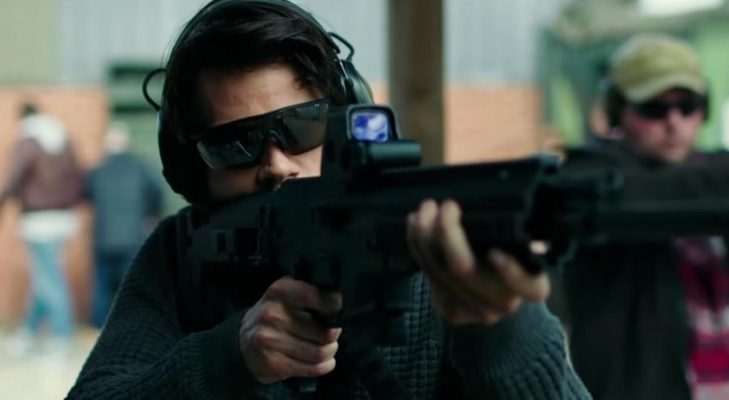
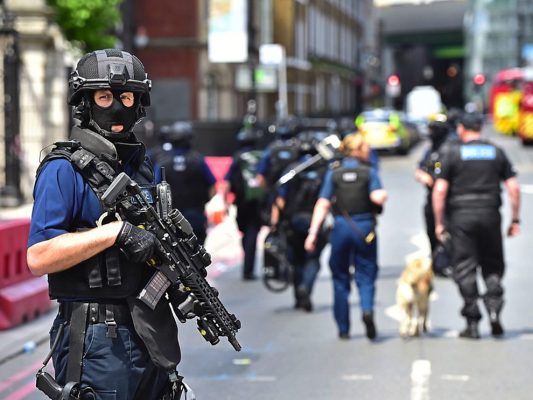
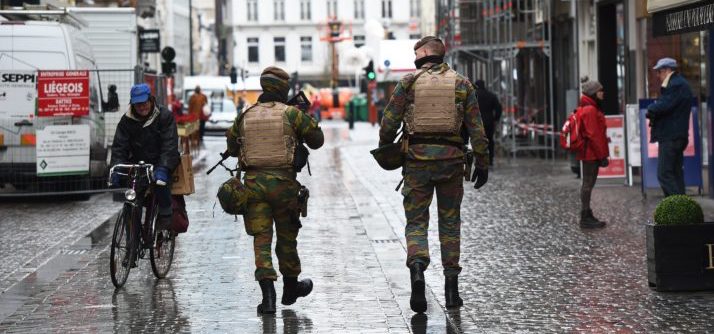


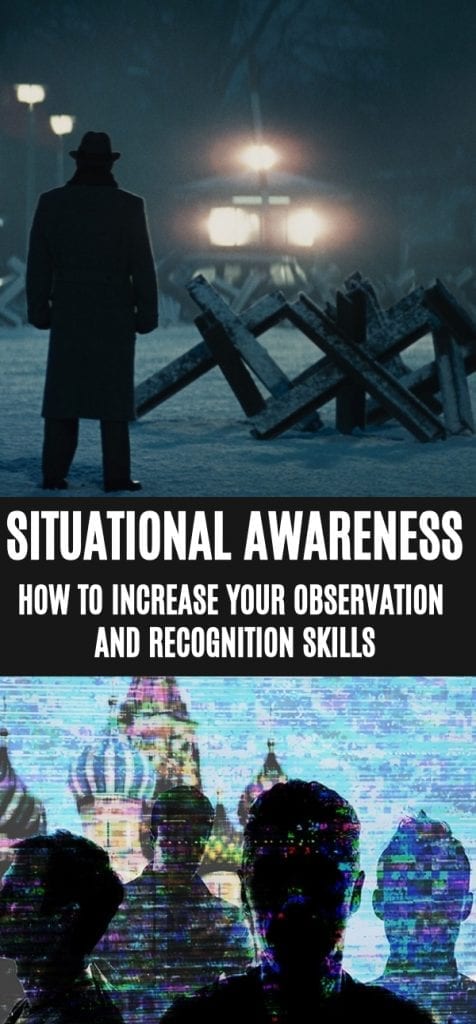
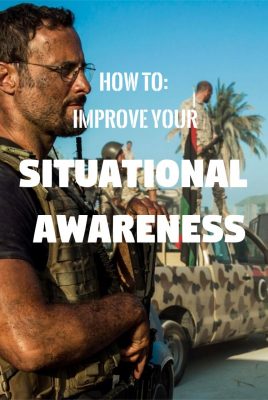
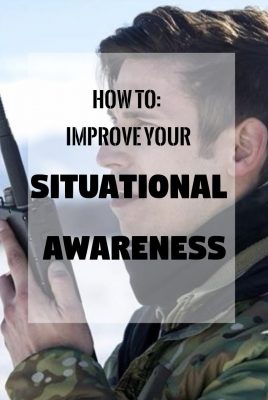
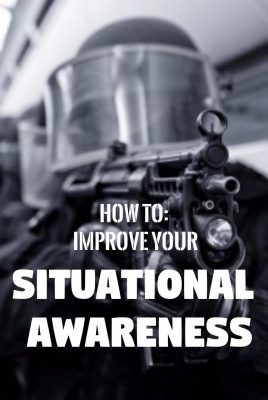
Have read about the ooda loop a few times, but the way you explained it in the article help me further understand it.
Thanks. To be honest, when I first came across it in military readings I was lost as to how to understand it. It wasn’t until someone explained the OODA loop in reference to a ‘bar fight’ that I understood fully how it worked.
The boxing was a more clean example of using it in action.
Wow thanks for this post. You are right I do use it every day but just as a personal safety issue this is an amazing mindset to practice and increase!
Thanks! And yes I really had to include the video in there just to show what sort of important events people could use SA in such a manner
That last video made me realize all of this is important to so many people, students, police, military, whoever you are you need thiS!
Exactly right. Cheers!
Great article! You have a gift for explaining things.
Thank you Sheila
Ben,
Nice description of SA. The Bourne thing probably discourages a lot of people. Even when they try deliberately, they can’t memorize six license plates or estimate a man’s weight, etc. Not being Jason Bourne doesn’t make someone a washout for SA, though. Simply being aware of one’s surroundings is a huge first step.
Most folks I see in the city (working downtown), are trying to NOT be aware of their surroundings. They intentionally shut out the “boring” reality with phone calls, texting or music — a more interesting substitute reality. Their intentional oblivion is why a mugger can get within inches of them unnoticed.
A great first step to practicing improving one’s Situational Awareness would be to NOT opt for substitute realities. Don’t listen to music or podcasts while you walk. Don’t text or call while walking. Instead, observe the reality around you as you walk.
— Mic
Hi Mic,
That is a great bit of advice to people who want to practice SA. Just even as the first step in an urban environment, look up and be aware.
Thanks for writing in.
I learned some if this S.A. while emiyed at a prison. Retired now, thanks for reminding me how essential this is.
That is definitely a place where you need to have eyes in the back of your head. Thanks Jenni!
Because I am always “SA” (especially while driving) I was able to easily detect that I was being followed, turned the trick, and boxed the car tailing me into a corner, of which I had him trapped. Turns out he was a private investigator for an insurance company. Because I was more “SA” than him, I got the upper hand. I have never been followed or tailed since!
Steve, that is great to hear someone use it get the upper hand.
So many people believe that these private investigators are able to follow them without being noticed, but with the simple awareness of one’s own surroundings and the basic principles of observation, you can spot these guys from a mile away.
Well done and thank you.
Ben.
Something I work on every day and every shopping trip with the family.
Good to hear Rusty! There are so many different applications where this can be used. Hope your kids see the fun side of it!
Excellent article Mr Brown! I watched the Evan video and I caught a couple of the “tell-tale” signs, but there were a few that I missed that were in plain sight. I think that this is an awesome article that people should read. Thanks again.
Thanks Curtis. That’s a very eye-opening video for everyone from police to schools!
Because of my political activities and my catch-and-release creation of AI Minds with open-source artificial intelligence, on some rare occasions I am certain that I am being not so much followed as simply observed, and on other occasions I simply assess the minuscule likelihood that I am under surveillance. As Mentifex I practice tradecraft of losing tails and I listen to know if I am being talked about in my five-plus languages of relative fluency. Since we all die eventually, I don’t worry about the efforts to triangulate me, and I actually enjoy taking countermeasures or interacting with the “swallows” sent to compromise me.
Wow this was a great primer! Thank you.
when I was younger and worked as bartender and was taken to after shift imbibing I made it a habit to see the doors, who the biggest abd most obnoxious were. most important i looked for the quiet, sly observational ones. case bar fights started. to this day i continue,